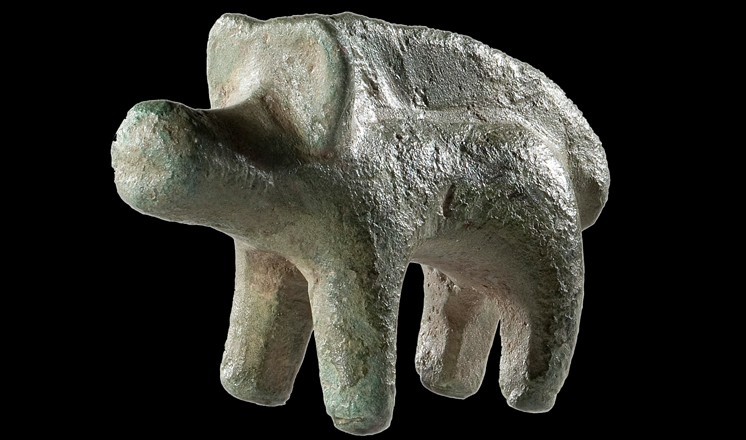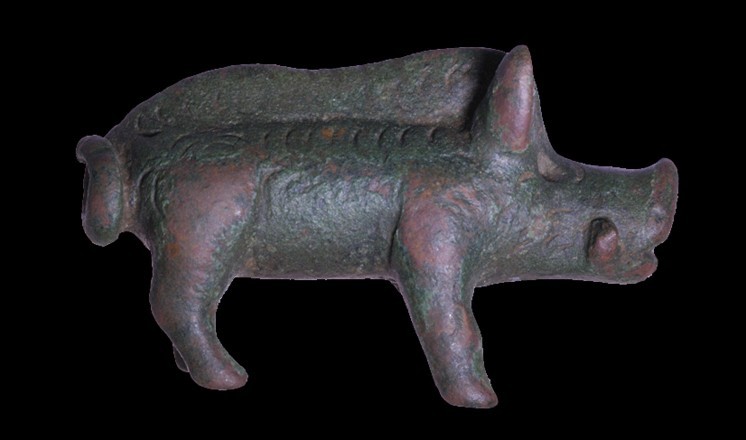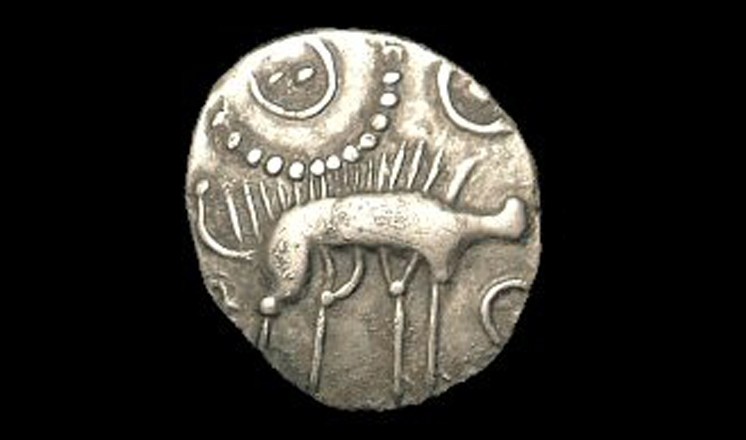Iron Age miniature boar acquired
RSS FeedThe late Iron Age is a fascinating period in British history. Although often overshadowed by the Roman invasion of AD43, and indeed often only discussed in terms of that invasion, the period of the later Iron Age, between c.300BC and c.AD50, was a period of advanced social organisation and great artistic creativity. We are very pleased to announce that we have just added a new object to our collections from this period.
The item in question is a miniature figurine of a boar, measuring only 35mm long nose to tail and standing 22mm high. The boar is cast in copper alloy and bears no signs of ever being attached to another object. It was discovered at Great Sturton, between Wragby and Horncastle, on the edges of the Lincolnshire Wolds. It was most likely produced at the very end of the Iron Age, in the 1st Century BC or the early 1st Century AD.
A number of similar boars are known from across Britain, though this appears to be the smallest example yet known. The boar was a symbol of warrior strength and masculinity and a totemic animal to many Iron Age tribes, including the Corieltavi who lived broadly in the area we now know as the East Midlands. The image of a fierce boar appears on some of their silver coinage. The Great Sturton boar is the third example known from Lincolnshire of a figurine, a second being the Rothwell Top boar which is also in our collections and a third, from Ludford, in private ownership. It is particularly interesting to note that, whereas many boars appear stylised and aggressive (such as the British Museum's boars from Hounslow in Essex), the Lincolnshire examples are more naturalistic and rather chubby and rounded in appearance. They also have large ears, facing forwards as if alert, and exaggerated dorsal bristles.
Some of the boars other known from Britain have traces of fittings on their feet, suggesting that they were originally attached to helmets or metal vessels, but the two Lincolnshire examples have no such fittings. It is possible that they were produced as votive offerings - intended to be placed at shrines or in water as offerings, perhaps even in place of the carcass of a real boar.
The Great Sturton miniature boar will be going on display very shortly, alongside the Rothwell Top boar in the Iron Age section of the gallery, so be sure to come along and say hello!
Comments
The boar from Great Sturton reminds me a lot the boar from Stradonice, Bohemia. It has almost the same size and style looks also very similar.
Lenka KovářováHi Lenka,
I agree - its amazing how many boar figurines across Europe have similar features and styles. I’m not aware of anyone doing a full study of these boars and how they might be connected stylistically on a wider scale, but it would be a fascinating piece of work
Antony Lee


